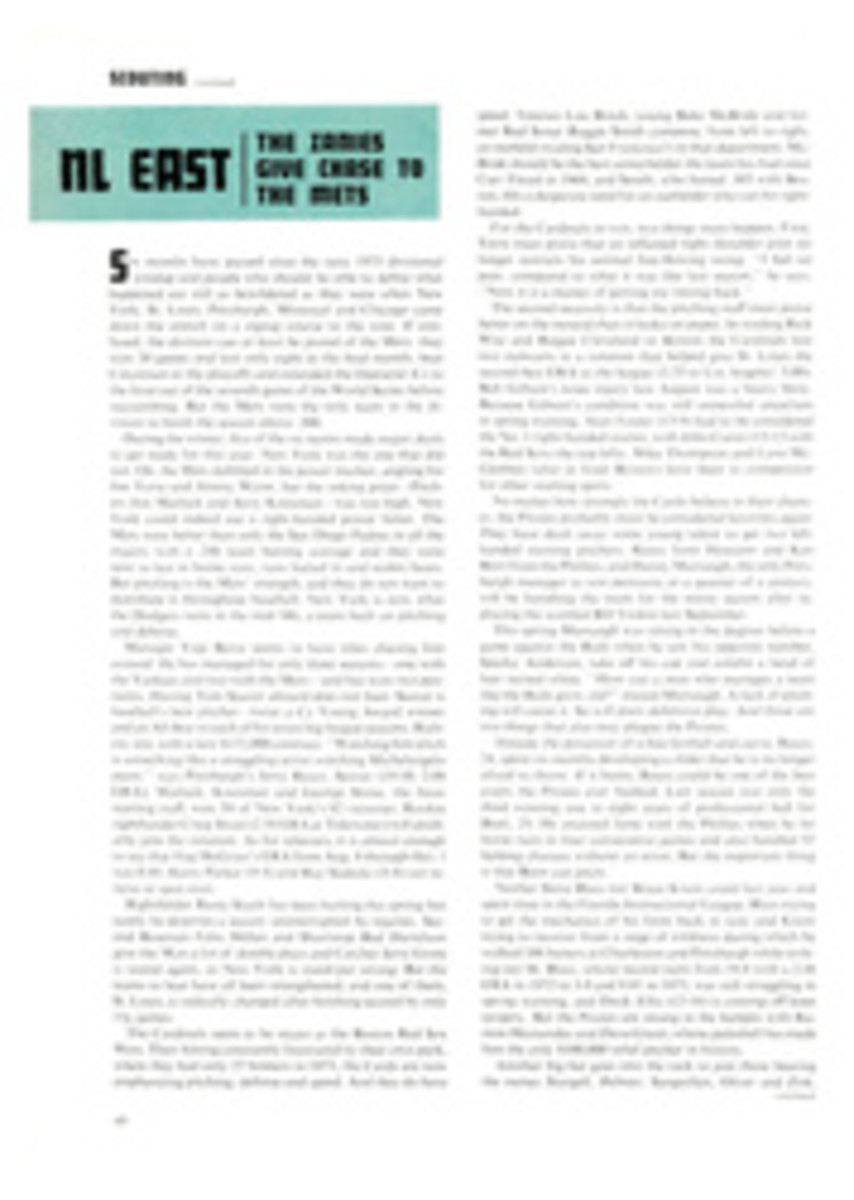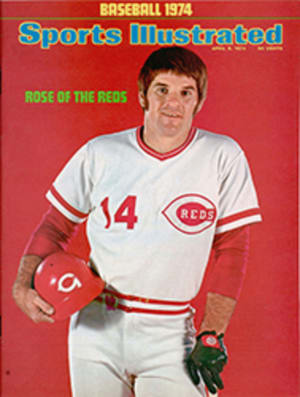
In this case it's seven—or eleven
Many a hand well worth a grand slam bid is absolutely unsuitable for a bid of six. One legendary story about such a hand involved Howard Schenken and Edward Hymes Jr., although somehow it was omitted from Schenken's recent autobiography, Education of a Bridge Player. It also involved a cue bid in the opponent's suit, which in modern usage is simply a forcing bid; it may or may not show first-round control, as in earlier days it always did. Always, that is, except when used to try to fool the opponents. Hymes tried this in a team match against Schenken, even though he held two losing cards in the suit Schenken had bid. It probably would not have worked had the bidding ended at six, but when Hymes went to seven the deceit succeeded. Schenken was persuaded not to lead his strong suit, and Hymes made 13 tricks when he could have been held to 11.
But that was a somewhat unusual example of what the experts call a five-or-seven hand. More often the fate of such a deal depends on a finesse or suit break rather than on the opening lead. So the next time you are confronted with a deal like the one shown, which turned up in a team match in New York not long ago, remember that it is wrong to bid a small slam, because if you can't make seven, you will probably go down one at six.
The bidding illustrates a part of the Blackwood Convention that is not universally known or followed. In answer to a bid of four no trump from partner asking for aces, the responder originally had to bid five no trump to show all four, thus precluding the usual repeat inquiry of five no trump to ask for kings. Since it would be difficult to imagine a hand in which a player could justify earlier strong bidding if he did not hold at least one ace, a five club response now has the dual role of showing either no aces or all four. In this case, South was in no doubt that North held all the aces, and because the partnership was playing five-card major-suit openings, he could count 13 tricks-six spades, five hearts and two minor-suit aces—before he saw the dummy.
East's double of the five-club bid was not without purpose; aware that the ace of clubs was located in the North hand, he was asking his partner to lead a club against the final contract. East might better have kept quiet. He received the club opening he had asked for, but South also received something, a hint that East might be long in clubs and, therefore, that if either opponent was short of spades it was more likely to be East. So South won the first trick with dummy's ace of clubs and led a low spade to his king. When East showed out it was then a simple matter to take a finesse against West's queen to make the grand slam.
In the other room South stopped at six spades, and West found the club lead on his own. On winning the ace of clubs, however, declarer played the ace of spades from dummy, after which there was no way to pick up the queen. South switched to hearts in hopes of discarding his club on the fourth one—a play that would have succeeded if West had held three or more hearts—but West was able to trump the third heart and lead a club to East's king to set the slam.
Even without the clue of a double of five clubs, it was technically incorrect for declarer to cash dummy's ace of spades. In a situation like this, where you have no idea which opponent might be void, it is always better to lead a low card first. Half the time, this will give you the chance to discover a bad break before it is too late to do anything about it.
ILLUSTRATION
North-South vulnerable North dealer
NORTH
[Ace of Spades]
[8 of Spades]
[4 of Spades]
[3 of Spades]
[Ace of Hearts]
[Jack of Hearts]
[10 of Hearts]
[9 of Hearts]
[2 of Hearts]
[Ace of Clubs]
[7 of Clubs]
[Ace of Diamonds]
[3 of Diamonds]
WEST
[Queen of Spades]
[7 of Spades]
[6 of Spades]
[7 of Hearts]
[3 of Hearts]
[10 of Clubs]
[9 of Clubs]
[6 of Clubs]
[3 of Clubs]
[King of Diamonds]
[Jack of Diamonds]
[8 of Diamonds]
[2 of Diamonds]
SOUTH
[King of Spades]
[Jack of Spades]
[10 of Spades]
[9 of Spades]
[5 of Spades]
[2 of Spades]
[King of Hearts]
[Queen of Hearts]
[6 of Hearts]
[Queen of Clubs]
[2 of Clubs]
[7 of Diamonds]
[4 of Diamonds]
EAST
[8 of Hearts]
[5 of Hearts]
[4 of Hearts]
[King of Clubs]
[Jack of Clubs]
[8 of Clubs]
[5 of Clubs]
[4 of Clubs]
[Queen of Diamonds]
[10 of Diamonds]
[9 of Diamonds]
[6 of Diamonds]
[5 of Diamonds]
NORTH
1 [Heart]
3 [Spade]
5 [Club]
PASS
EAST
PASS
PASS
DOUBLE
PASS
SOUTH
1 [Spade]
4 NT
7 [Spade]
WEST
PASS
PASS
PASS
Opening lead: 10 of clubs

